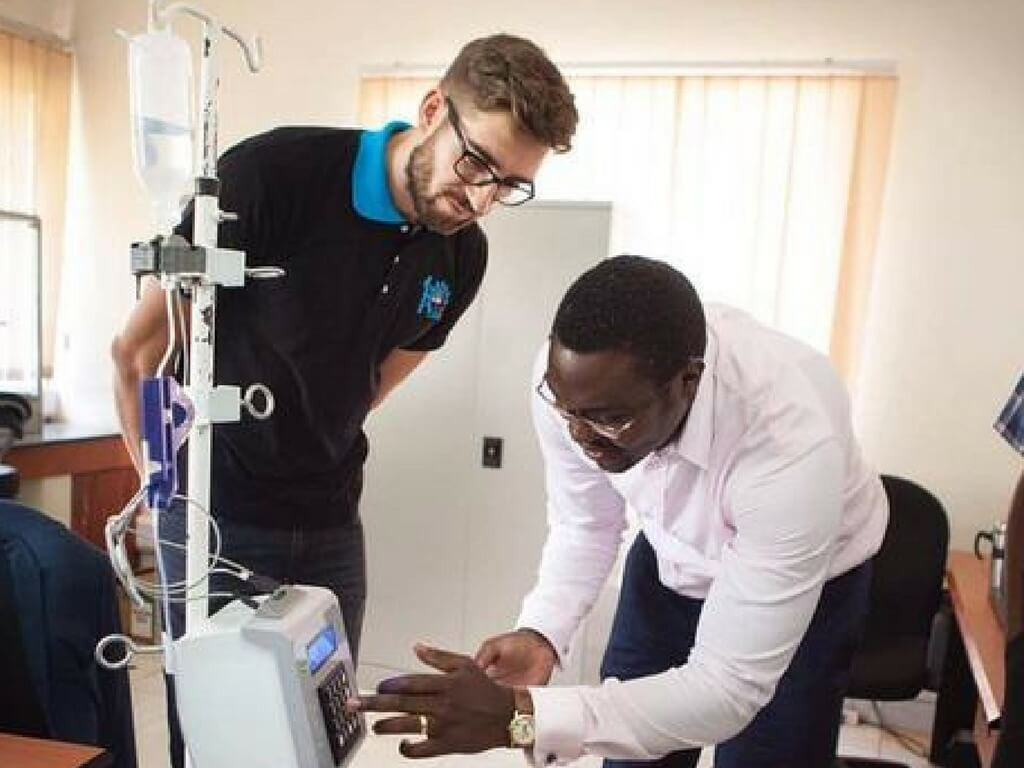
In one hospital, in one city in Uganda, an average of 400 children are attended to in the pediatrics unit every day.
Nearly 10% of these cases require transfusions for the treatment of malaria, pneumonia, and diarrhea. With so many patients and not enough staff members to adequately oversee treatment, nearly 12% of children in need of intravenous care die as a result of a lack of equipment or failure of available medical devices.
A joint effort between the Uganda Industrial Research Institute (UIRI) and the Design without Borders Uganda team, however, aims to change that. Using their MakerGear 3D printer, the two teams created a life-saving device that not only costs less than alternatives, but is also better suited to its environment.
 The two teams worked together to create an intravenous infusion set that costs 97% less than its traditional, imported counterpart. Using a simple yet sophisticated gravity-fed and electronically-regulated system, this programmable device allows medical care staff to safely and cost effectively control the infusion of fluids and drugs. As if it weren’t enough to drastically reduce the cost of life-saving technology in Uganda, their invention also eliminates the need for constant monitoring of infusions.
The two teams worked together to create an intravenous infusion set that costs 97% less than its traditional, imported counterpart. Using a simple yet sophisticated gravity-fed and electronically-regulated system, this programmable device allows medical care staff to safely and cost effectively control the infusion of fluids and drugs. As if it weren’t enough to drastically reduce the cost of life-saving technology in Uganda, their invention also eliminates the need for constant monitoring of infusions.
As a result, medical providers in Uganda can provide more effective care to a greater number of patients, all within the same span of time for a mere 3% of the traditional hardware costs. Because the device is pre-programmed and easily configured to serve a patient’s exact needs, the possibility of human and technological error is eliminated almost entirely.
Throughout their numerous iterations, the team collaborated to design, create, and test their prototypes quickly and affordably using their MakerGear M2 3D printer. When they had questions about optimizing the design for 3D printing, MakerGear's own Joshua Wills began printing, testing, and evaluating the design in order to provide immediate feedback.
 After months of preparation, the first assembled prototype of their infusion set is now ready for clinical testing. In a place where supply chain economics often keep life-saving technologies out of reach, 3D printing is uniquely positioned to provide a new way of tackling global issues in the 21st century.
After months of preparation, the first assembled prototype of their infusion set is now ready for clinical testing. In a place where supply chain economics often keep life-saving technologies out of reach, 3D printing is uniquely positioned to provide a new way of tackling global issues in the 21st century.
Thanks to 3D printing, what began as an idea now holds the potential to transform healthcare on country-wide scale. For vulnerable populations like children, the elderly, and low-income patients, the collaborative efforts between Design Without Borders and UIRI are more than just a 3D printing success story.
With our roots firmly planted in the maker culture, we’re thrilled to watch this project evolve as it continues to illustrate the promise of high-performance desktop 3D printers in professional and industrial environments.
Principal Investor in the project, Philippa Ngaju Makobore (pictured above with a MakerGear M2) says, "We look forward to validating our device on a countrywide scale clinical trial. We anticipate that our device will save hundreds of lives by preventing unnecessary mortality and morbidity that is associated with improper use of infusion sets."
To hear from the team about their design process, check out their video or learn more at DesignWithoutBorders.com.
Saving lives of children – the Electronically Controlled Gravity-feed Infusion Set from Design without Borders on Vimeo.
Images from: www.designwithoutborders.com